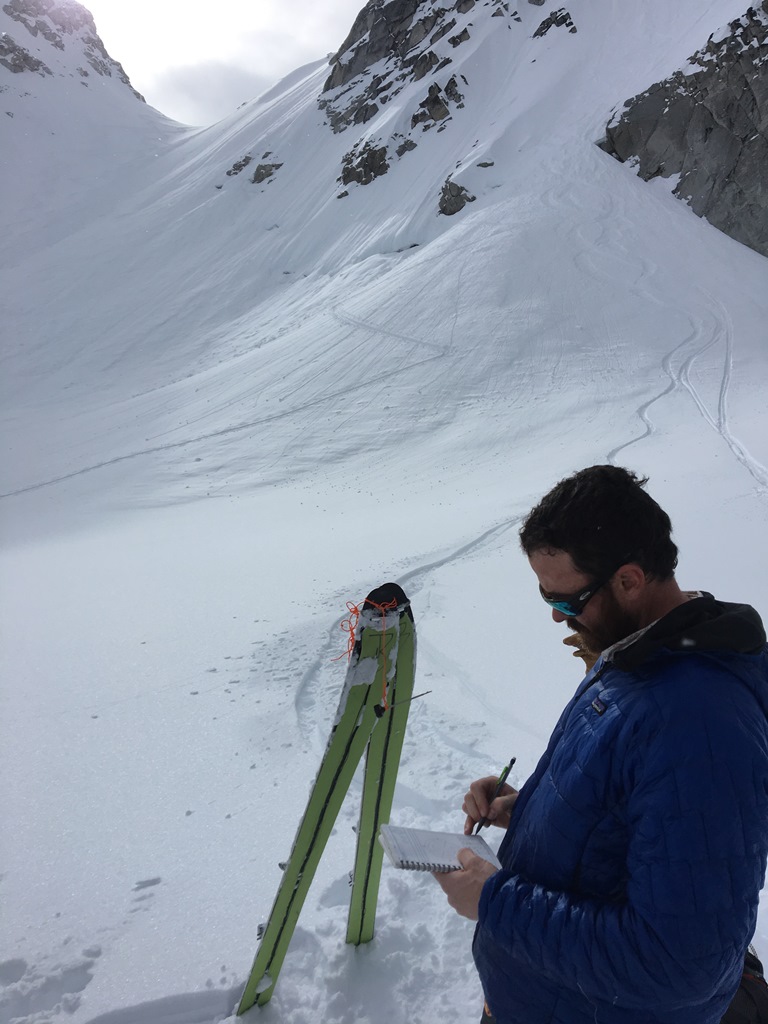 Probing the slope (NPS Photo / Preston)
Probing the slope (NPS Photo / Preston)After discussing hazards and objectives for the day during an ‘AM meeting’ on April 10, the teams once again split up and ranged farther than they had the day before -- venturing up side glaciers for more assessment and observation. One team left the Pika and crossed the Crown Glacier, while one group toured up through the icefall between Royal Tower and Italy’s Boot. The third group explored the glaciers north and south of the Throne. All groups found similar conditions with solar aspects (SE, S, SW) having a sun crust below the new snow, and a dry right-side-up snowpack on northerly aspects. With the absence of wind, the main avalanche concern was storm slab, so tests targeted assessing the reactivity of the new snow on different aspects.
 Ski touring below the Crown Jewel (NPS Photo / Frank Preston)
Ski touring below the Crown Jewel (NPS Photo / Frank Preston)April 11 allowed for some flexibility, with a team staying close to camp in order to practice beacon searches, and other teams exploring more terrain and stability. After determining goals, hazards and objectives in the AM meeting, one group traveled down the Pika Glacier and up the side glacier east of the Dragon’s Spine to the base of Exit Pass. With increasing snow and decreasing visibility, teams returned to discuss their findings in the PM meeting. It started snowing once again, and the April 12 was primarily spent in camp as visibility was poor. Some groups were able to go out using the Throne as a handrail in order to assess the lower angle slopes below the 1-Star classic climbing route, “Swisser Than Swiss Chocolate”.
On the morning of April 13, the team packed up and stomped out a runway, as approximately 40 cm of new snow blanketed the airstrip. Fortunately, weather cleared enough to fly out by mid-afternoon.
For the ranger team, this training was significant as it was the last field training before the main climbing season starts. In addition to avalanche training, this week provided time for team building and bonding that will allow rangers to fluidly work with each in potentially stressful and time-sensitive situations. In two weeks, rangers will take turns on Denali with teams of volunteers; give briefings at the Walter Harper Talkeetna Ranger Station; and go on two-person patrols of climbs or areas in the Alaska Range, but until the end of season debrief the team will be staged at different places ready for the realities of the season.
 Ranger Jake Beren records weather and snow observations (NPS Photo / Frank Preston)
Ranger Jake Beren records weather and snow observations (NPS Photo / Frank Preston)